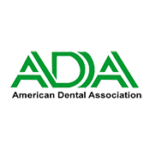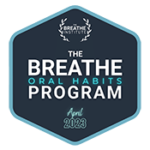Kids can be frightened by an electric toothbrush: They buzz; they make noise; they can tickle or feel weird on gums and teeth. Kids have more sensitive gag reflexes than adults that are designed to protect their smaller airways from obstruction. As a result, anything that goes into a child’s mouth is likely to be more uncomfortable than for an adult. Keeping these things in mind as you introduce a toothbrush—whether manual or electric—can make the process smoother and make your child love brushing.
Kids look to their parents for guidance: Show your child what you do, and he will want to mimic it. Even before a parent sticks a toothbrush in a kid’s mouth, that child should see his mom or dad exhibiting good brushing habits, especially if the parent decides to introduce an electric toothbrush. I tell my patients to go around the house flossing, brushing, and smiling. Make it look like fun, and kids will want to be part of it. If you can, I even recommend tap dancing while you brush and floss!
Pay attention to the way a child breathes: Some children are mouth breathers, meaning they breathe primarily through their mouth, rather than their nose. These kids may be less likely to enjoy brushing, as it can be hard to breathe and brush at the same time, and they may gag more easily. (For the same reason, these children may also be more fearful at the dentist’s office). If your child is a mouth breather, keep the brushing experience positive and be prepared to introduce different aspects of brushing at a slower pace to ensure your child enjoys the process and actually wants to do it.
Hold off on introducing toothpaste: Kids won’t need toothpaste until they are at least 5 years old—before then, toothpaste can complicate everything. Kids may not like the taste of toothpaste; it may turn them off from the overall brushing experience; and the truth is that kids are more likely to brush for a longer time if they are doing so with a “dry” brush. I have found that toothpaste shortens the duration of brushing—and instead of trying to get kids to brush for 10-15 seconds with toothpaste, it’s much better to have them brush for 1-2 minutes without.
Why is that? In reality, toothpaste is only 10 percent of the equation when it comes to brushing teeth. In fact, the time spent brushing, the quality of the brush stroke and toothbrush head, and the ability of the child to brush all areas of the teeth and gums are each just as important as toothpaste—if not more so.
Here’s the truth: Kids don’t NEED an electric toothbrush.
But if you want to establish good brushing habits, an electric toothbrush can help, because kids just aren’t great brushers.
Children don’t understand the importance of brushing, and they cannot visualize the whole area inside their mouth, let alone try to reach all of it. Kids also lack the coordination of proper brushing, so an electric toothbrush can help them reach more areas of their mouth with less effort.
Even parents who brush their child’s teeth should keep this in mind: An electric toothbrush can get more done in less time, making the most of the few moments a child is receptive to brushing and actually allows the brush to remain in his mouth.
At what age should you buy an electric toothbrush for a child?
A child can start an electric toothbrush at age 2—without toothpaste, but WITH supervision, of course. Many of the families I talk to introduce electric toothbrushes between the ages of six and eight. Some can certainly do it earlier—just don’t force it, as any negative experiences with brushing could leave lasting negative impressions.
For most families, however, a child is ready for an electric toothbrush when he or she asks for it—when he sees a parent using one and asks for his own, for example. Turning brushing into a family activity can certainly facilitate this process, just be sure to keep the glass cleaner and paper towels handy, as it can quickly turn into a messy affair.
What to Look for When Buying a Kids’ Electric Toothbrush
Typically, parents are usually willing to buy a higher quality toothbrush for themselves than for their children, but that is the wrong approach. You want the same quality of toothbrush for your child that you have for yourself, primarily because lower quality toothbrushes may lead to an abrasive toothbrush head that can damage the enamel on a child’s still-developing teeth.
When evaluating as electric toothbrush, here are four things to consider:
1. Plaque removal: The key job of any toothbrush is to remove plaque from teeth and gums, and a high-quality toothbrush will remove plaque consistently and from all areas of the mouth. By using a plaque score—which compares the levels of plaque a patient has between appointments—as well as the personal feel of the mouth after brushing, a dentist can easily determine how well a chosen toothbrush is attacking plaque.
Removing plaque is especially important in the prevention of cavity formation. Americans, especially those eating a Western diet filled with refined carbohydrates, have thick plaque layers which sit on top of the “biofilm,” which is the protective layer referred to as “the skin of our teeth.” The biofilm is what nourishes the tooth, keeping it moist and supplied with calcium. With too much plaque on top of the biofilm, the tooth struggles to access the nutrients it needs, thus leading to cavities and decay.
2. Head shape and size: Head shape and size are important in accessing hard-to-reach areas, such as between the cheeks and molars. This is extremely important for kids, whose mouths are small and still developing.
3. Quality of bristles: Whenever possible, I recommend replacing the toothbrush head every month to ensure that bristles don’t become worn and wear away the enamel. With high-quality toothbrushes, this should happen at least every three months, but with lower quality bristles, the process may need to occur more frequently. Bristles make contact with the tooth, and a bristle made of cheaper material will wear down quickly and become too sharp, scratching the enamel.
4. Power source: A quality kids’ electric toothbrush should be rechargeable, not battery powered. In my experience, the battery-powered toothbrushes that can be purchased at the supermarket are not high quality, and there is no need to worry about the charging bases of electric toothbrushes, as they are completely safe for kids to be around.
The Best Electric Toothbrushes for Kids
For most kids, I recommend the Oral-B Kids Rechargeable Electric Toothbrush. It’s rechargeable with a small, soft head and high-quality bristles. It also has a larger grip, so it’s easy for kids to hold and use, and the oscillating, round head motion is more comfortable for kids than the sonic variety. Finally, it’s as effective at removing plaque as any other toothbrush on the market.
Best For Comfort
Oral B Kids Electric Toothbrush
Sensitive Clean toothbrush head for gentle brushing with a distinct head shape that surrounds the tooth for better individual cleaning. Available in multiple popular character picks with accompanying app.
Coming in at a close second is my granddaughter, Quinn’s, favorite electric toothbrush: the quip Kids Electric Toothbrush. Quip’s kids’ brush uses an easy-grip handle and the brush itself is very lightweight and easy to use. Although they use sonic vibrations, they’re much more gentle than other sonic brushes.
Plus, they come in great colors!
Best For Stylish Kids
quip Kids Electric Toothbrush
A sleek kids’ brush available in a variety of colors. Subscriptions available, so you never have to remember to re-order brush heads! Use code ASKTHEDENTIST for $15 off your first refill.
Other options to consider:
Sonicare’s Sonicare for Kids is a de-tuned version of the electric toothbrush they offer adults, but sonic waves in a child’s mouth can be frightening. It’s a higher pitched brush, too, and kids are sensitive to noise, while the small grip makes it harder for kids to hold. When my own daughter tried it, she didn’t like it. Some kids do like the sonic waves, but in my experience, the oscillatory brushes work better.
Best For Big Kids
Philips Sonicare for Kids
500 strokes per minute with KidPacer alarms letting the child know when to move to the next quadrant of the mouth ensuring thorough cleaning. Recommended for bigger, more experienced kids.
If you prefer to buy a manual toothbrush for your child:
The compact, child’s manual Oral-B—with a soft toothbrush head—will do the trick. This is especially helpful for younger kids (aged 2-4) who are mouth breathers and struggle with toothbrushing. Bonus: This toothbrush may even have their favorite Disney character printed on the handle.
Best For the Growing Kid
Oral B Pro-Health Stages Manual Toothbrush
The cushioned brush head and Power Tip bristles designed to help protect tender gums and to help clean hard to reach back teeth. Designed for use by kids 5 to 7 years old.
For kids under two years old, I’ve found The Radius Totz to be the best toothbrush. It’s an effective and safe brush made with recycled BPA-free plastic; it’s also great for little hands and for massaging the gums. Skip the baby rattles on the baby registry and ask for a Radius Totz instead.
Best for Kids Under Two
Radius Totz Manual Toothbrush
Totz is specially designed for small teeth and gums. FDA-certified and free of harmful chemicals like BPA and synthetic dyes.
One last, IMPORTANT note: When it’s the parent brushing the child’s teeth (usually the case from “first tooth” to age 8), don’t use your toothbrush or one that you think would work. Think about what your kid would want. It’s a subtle point, but it may break or make the habit of brushing for your child.
First impressions are vital in this case, so whatever you decide, remember that kids look to parents to model brushing habits. If you’re happy with your electric toothbrush choice, consider buying a child’s version of the same model and brushing together. Imitation is the sincerest form of flattery—especially when it comes to brushing teeth.









